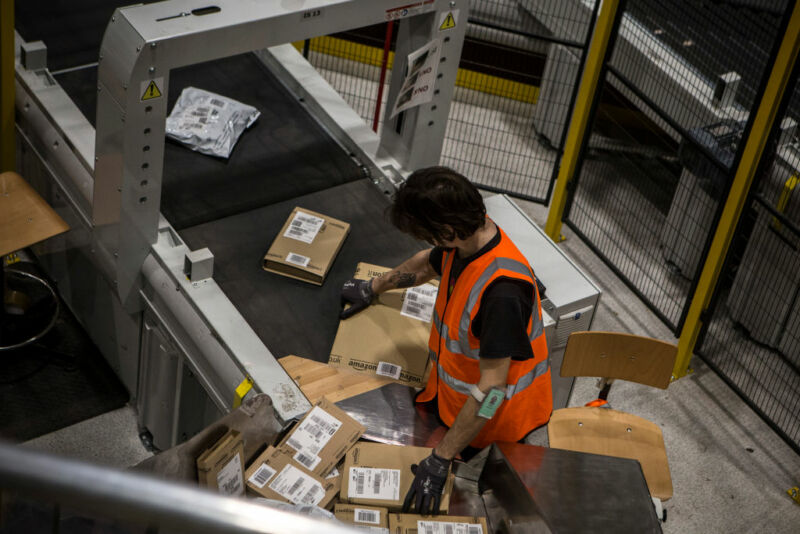
Amazon is rolling out cheap new tools that will allow factories everywhere to monitor their workers and machines, as the tech giant looks to boost its presence in the industrial sector.
Launched by Amazon’s cloud arm AWS, the new machine-learning-based services include hardware to monitor the health of heavy machinery and computer vision capable of detecting whether workers are complying with social distancing.
Amazon said it had created a two-inch, low-cost sensor—Monitron—that can be attached to equipment to monitor abnormal vibrations or temperatures and predict future faults.
AWS Panorama, meanwhile, is a service that uses computer vision to analyze footage gathered by cameras within facilities, automatically detecting safety and compliance issues such as workers not wearing PPE or vehicles being driven in unauthorized areas.
The new services, announced on Tuesday during the company’s annual cloud computing conference, represent a step up in the tech giant’s efforts to gather and crunch real-world data in areas it currently feels are underserved.
“If you look at manufacturing and industrial generally, it’s a space that has seen some innovations, but there’s a lot of pieces that haven’t been digitized and modernized,” said Matt Garman, AWS’s head of sales and marketing, speaking to the FT.
“Locked up in machines”
“There’s a ton of data in a factory, or manufacturing facility, or a supply chain. It’s just locked up in sensors, locked up in machines that a lot of companies could get a lot of value from.”
Amazon said it had installed 1,000 Monitron sensors at its fulfillment centers near the German city of Mönchengladbach, where they are used to monitor conveyor belts handling packages.
If successful, said analyst Brent Thill from Jefferies, the move would help Amazon cement its position as the dominant player in cloud computing, in the face of growing competition from Microsoft’s Azure and Google Cloud as well as a prolonged run of slowed segment growth.
“This idea of predictive analytics can go beyond a factory floor,” Mr. Thill said. “It can go into a car, on to a bridge, or on to an oil rig. It can cross fertilize a lot of different industries.”
A number of companies are already trialling AWS Panorama. Siemens Mobility said it would use the tech to monitor traffic flow in cities, though would not specify which. Deloitte said it was working with a major North America seaport to use the tool to monitor the movement of shipments.
“Easy for us to get worried”
However, Amazon’s own use of tools to monitor the productivity of employees has raised concerns among critics. Throughout the pandemic, the company has used computer vision to ensure employee compliance with social distancing guidelines.
Swami Sivasubramanian, AWS’s head of machine learning and AI, said none of the services announced would include “pre-packaged” facial recognition capabilities, and he said AWS would block clients who abused its terms of service on data privacy and surveillance.
“When you look at this technology, sometimes it’s very easy for us to get worried about how they can be abused,” he told the FT.
“But the same technology can be used to ensure worker safety. Are people walking in spaces where they shouldn’t be? Is there an oil spill? Are they not wearing hard hats? These are real-world problems.”
© 2020 The Financial Times Ltd. All rights reserved Not to be redistributed, copied, or modified in any way.
reader comments
93